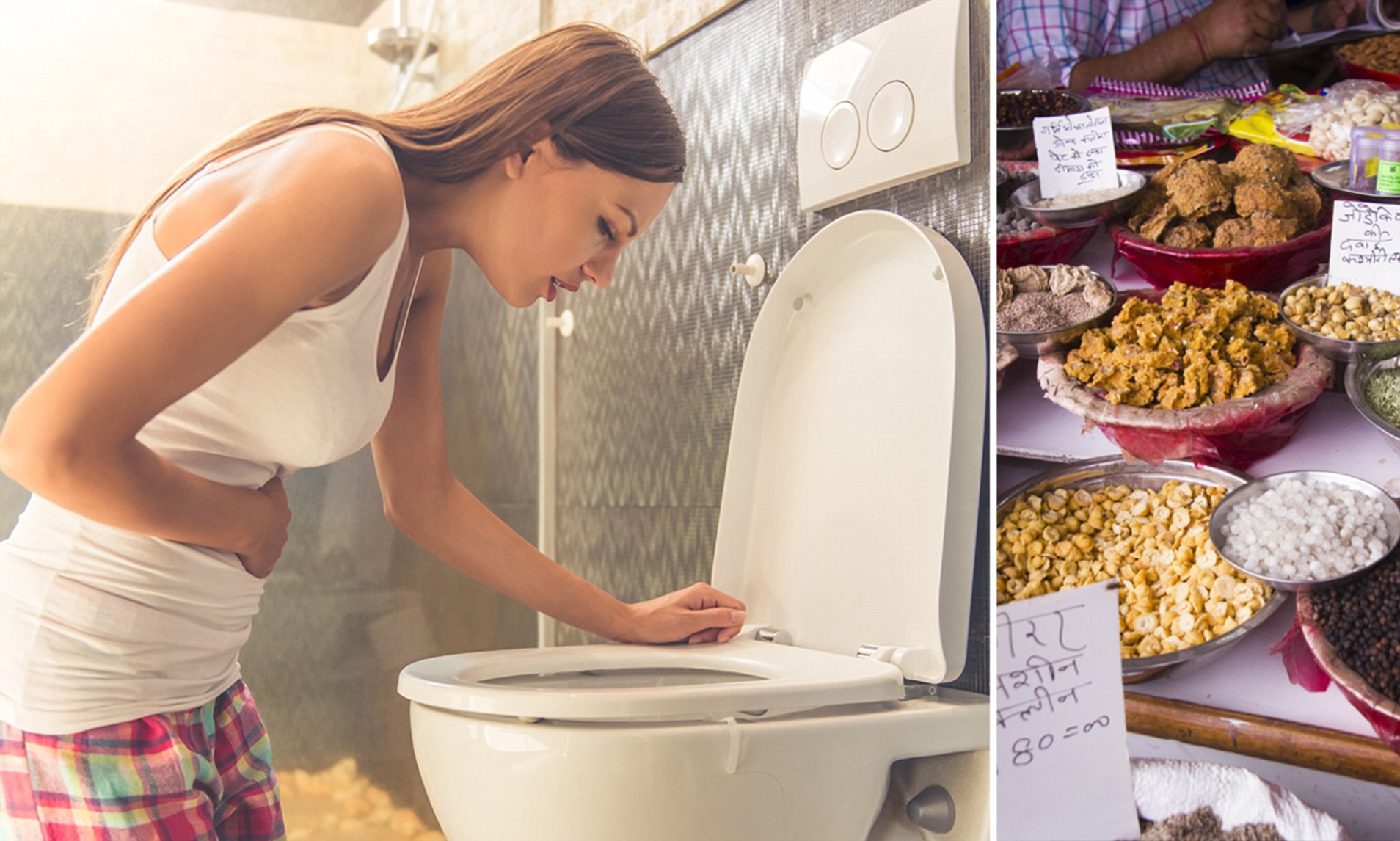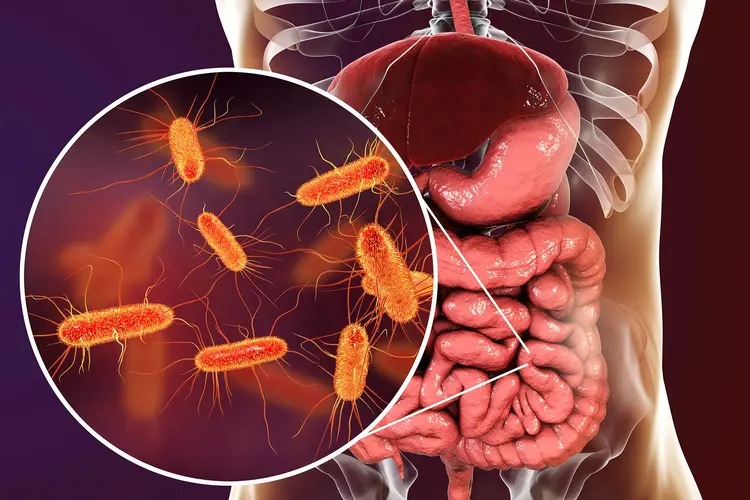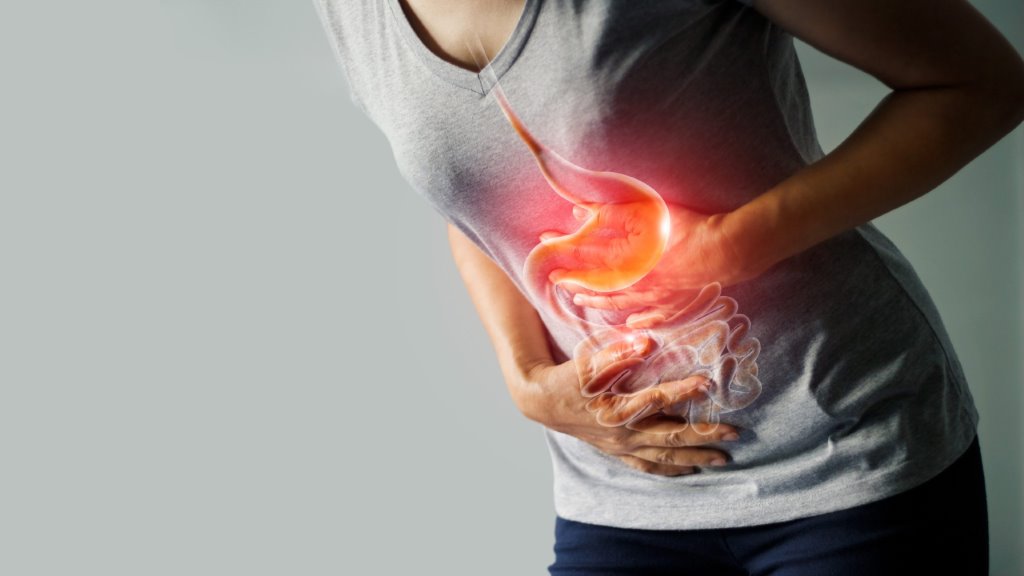Food poisoning rarely announces itself politely. One moment you feel fine, and a few hours later your body seems to turn against you, reacting with nausea, cramps, fever, or sudden trips to the bathroom. What feels like a simple stomach issue is actually a fast-moving biological battle taking place deep inside your digestive system. From the moment contaminated food is swallowed, a chain reaction begins—one that involves microbes, toxins, immune cells, and emergency defense mechanisms designed to protect you at almost any cost.
Foodborne illness occurs when food carries harmful bacteria, viruses, parasites, or the toxic substances they produce. These contaminants can slip into meals at many points, long before the food ever reaches your plate, or even during preparation at home. Once inside the body, some microbes are destroyed quickly, while others survive harsh stomach acid and reach the intestines, where they trigger inflammation and immune alarm signals. The symptoms you experience are not random—they are deliberate responses shaped by millions of years of human biology, all focused on one goal: getting rid of the threat as fast as possible.
Understanding what happens inside your body during food poisoning helps explain why symptoms can appear suddenly or take days to develop, why some cases are mild while others become dangerous, and why hydration and rest are so critical during recovery. What follows is a step-by-step look at how food poisoning unfolds, from the first swallowed bite to the moment your body begins to regain balance.
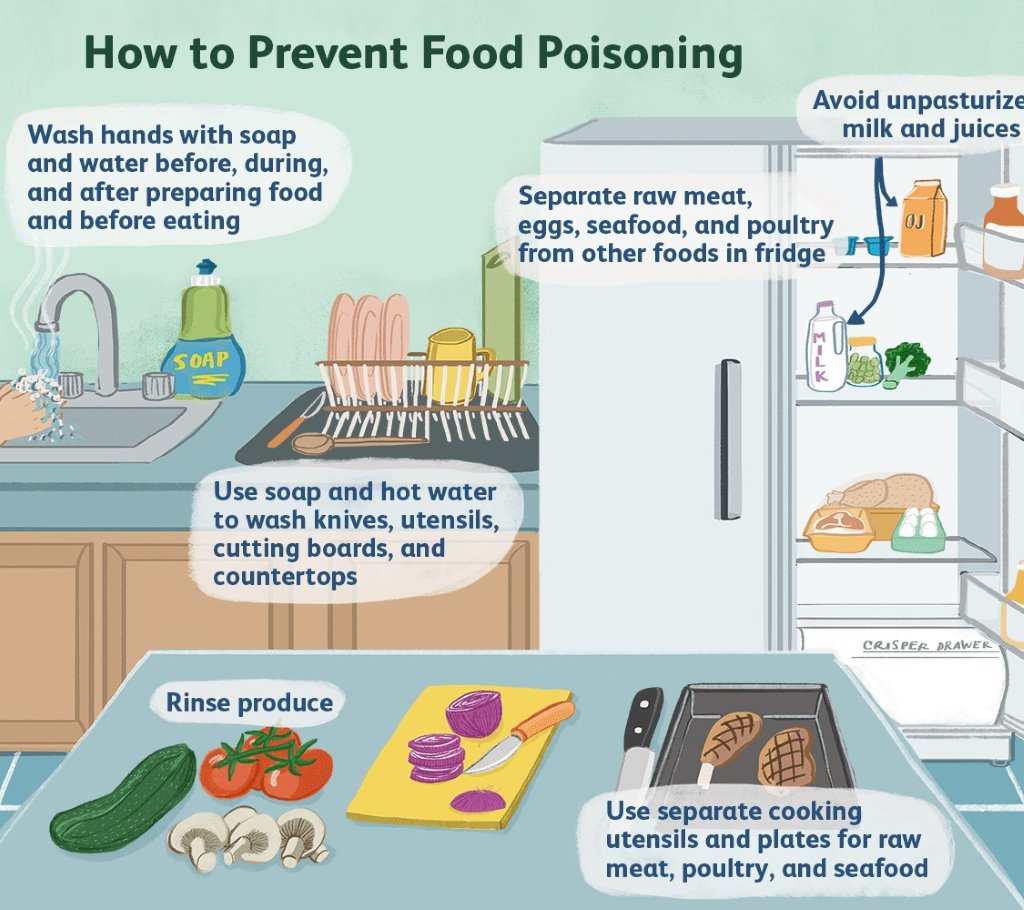
Symptoms
The symptoms of food poisoning vary depending on the type of contaminant, how much was consumed, and how strong a person’s immune system is. Some people experience mild discomfort, while others develop intense gastrointestinal distress that disrupts normal bodily functions for days.
Common signs of food poisoning include nausea and a persistent feeling of sickness that makes eating unappealing. Vomiting often follows as the body attempts to expel harmful substances before they move further through the digestive tract. Diarrhea, which may be watery or bloody, is another frequent symptom and represents the intestines flushing out toxins and bacteria. Many people also experience abdominal pain and cramping as the muscles of the gut contract forcefully in response to irritation and inflammation. Fever may develop as the immune system raises body temperature in an effort to slow microbial growth.
The timing of these symptoms can differ widely. Some people become ill within a few hours, especially when toxins are already present in the food. Others may not feel sick until bacteria have had time to multiply inside the intestines, which can take several days. Once symptoms begin, illness may last only a few hours or persist for several days, depending on the severity of the infection and the body’s ability to recover.
When to see a doctor
While many cases of food poisoning resolve without medical treatment, certain symptoms signal that professional care is needed. Frequent vomiting that prevents you from keeping liquids down can quickly lead to dehydration, which is especially dangerous for children, older adults, and people with chronic illnesses. Bloody vomit or stools may indicate damage to the digestive lining or a more aggressive infection that requires evaluation.
Diarrhea lasting longer than three days suggests that the body is struggling to eliminate the infection on its own. Severe or worsening abdominal pain may point to complications such as inflammation of the intestines or other organs. A fever higher than 100.4°F (38°C) can be a sign that the immune system is under significant strain.
Signs of dehydration should never be ignored. Excessive thirst, dry mouth, little or no urination, extreme weakness, dizziness, or lightheadedness indicate that fluid loss is exceeding intake. Neurological symptoms, including blurry vision, muscle weakness, or tingling in the arms, may suggest toxin-related nerve involvement and require immediate medical attention.
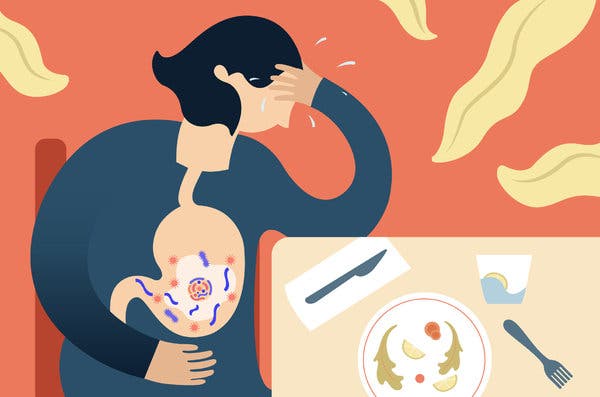
How Food Poisoning Disrupts the Body
Most people are familiar with the sudden misery food poisoning can bring. Nausea builds quickly, vomiting may come in waves, and diarrhea often follows with little warning. Cramping in the stomach and intestines can be intense, sometimes leaving a person doubled over in pain. While viruses can be responsible for these symptoms, bacteria are among the most common causes worldwide. Organisms such as Salmonella and Campylobacter are frequent offenders, particularly in undercooked meat, unpasteurized dairy, and contaminated produce.
Different bacteria cause illness in different ways. Some species enter the body, survive digestion, and then begin multiplying inside the intestines before releasing toxins that damage tissue and disrupt normal gut function. Other bacteria contaminate food with toxins before it is ever eaten, meaning illness can begin rapidly after ingestion. In both cases, the digestive system becomes the main battleground, and the immune system responds aggressively in an effort to contain the threat.
Bacteria enter the digestive system
Some bacteria, along with certain enterotoxins produced by them, are remarkably resilient. They can survive the acidic environment of the stomach, which normally acts as a powerful defense against pathogens. Once these organisms pass through the stomach, they reach the intestines, where conditions are far more favorable for survival and growth.
At this stage, a person may feel completely normal. Depending on the type of bacteria involved, symptoms may not appear immediately. In some cases, it can take up to 72 hours before the first signs of illness emerge. During this silent period, bacteria settle into the gut and begin interacting with the cells lining the intestines, laying the groundwork for inflammation and discomfort that soon follows.
Bacteria multiply inside the gut
After entering the intestines, many bacteria go undetected at first. The immune system does not always recognize them immediately, allowing the organisms time to multiply. As their numbers increase, they begin producing toxins that interfere with normal cellular processes.
These toxins damage the protective lining of the gut, increasing permeability and allowing inflammatory substances to penetrate deeper into intestinal tissue. This process triggers alarm signals within the body, alerting immune cells that a threat is present. The result is a rapid escalation of immune activity aimed at eliminating the invading bacteria and limiting further damage.
Immune response takes over
Once the immune system recognizes the infection, specialized immune cells release signaling molecules known as pro-inflammatory cytokines. These chemical messengers coordinate the body’s defense, calling additional immune cells to the site of infection and increasing blood flow to the affected tissues.
While this response is essential for fighting off harmful bacteria, it also causes swelling, irritation, and heightened sensitivity in the intestines. The inflamed gut becomes less efficient at absorbing nutrients and fluids, contributing to pain, cramping, and the urgent need to empty the bowels. Much of the discomfort associated with food poisoning comes not only from the bacteria themselves, but from the intensity of the immune reaction they provoke.
Flooded intestines
As the immune response intensifies, one of the most disruptive changes occurs inside the intestinal lining itself. Inflammation causes the tiny blood vessels supplying the gut wall to become more permeable. This allows fluid, electrolytes, and immune cells to leak into the intestinal space. From the body’s perspective, this is a defensive maneuver—diluting toxins and flushing harmful bacteria out as quickly as possible.
This sudden influx of fluid overwhelms the intestines’ ability to reabsorb water, resulting in diarrhea. The stool becomes loose or watery because the normal balance between absorption and secretion has been completely disrupted. In more severe infections, damage to the gut lining can allow small amounts of blood or mucus to mix with intestinal contents, which explains why some people experience bloody diarrhea.
At the same time, intestinal muscles begin contracting more forcefully and more frequently. These strong contractions are responsible for the cramping pain often described as waves of pressure or twisting sensations in the abdomen. The body is essentially forcing its digestive tract into overdrive, prioritizing rapid evacuation over comfort or efficiency.
Fluid loss during this stage can be substantial. When vomiting and diarrhea occur together, dehydration can develop quickly, especially if fluids are not replaced. Electrolyte imbalances may follow, contributing to weakness, dizziness, and fatigue. This is why rest, hydration, and careful monitoring of symptoms are so important during recovery.
As the bacteria are cleared and toxin levels fall, inflammation gradually subsides. The intestinal lining begins repairing itself, fluid balance normalizes, and digestion slowly returns to normal. For most people, this recovery phase happens naturally over a few days. However, in more severe cases or in individuals with weakened immune systems, lingering inflammation or complications can extend symptoms and require medical intervention.

